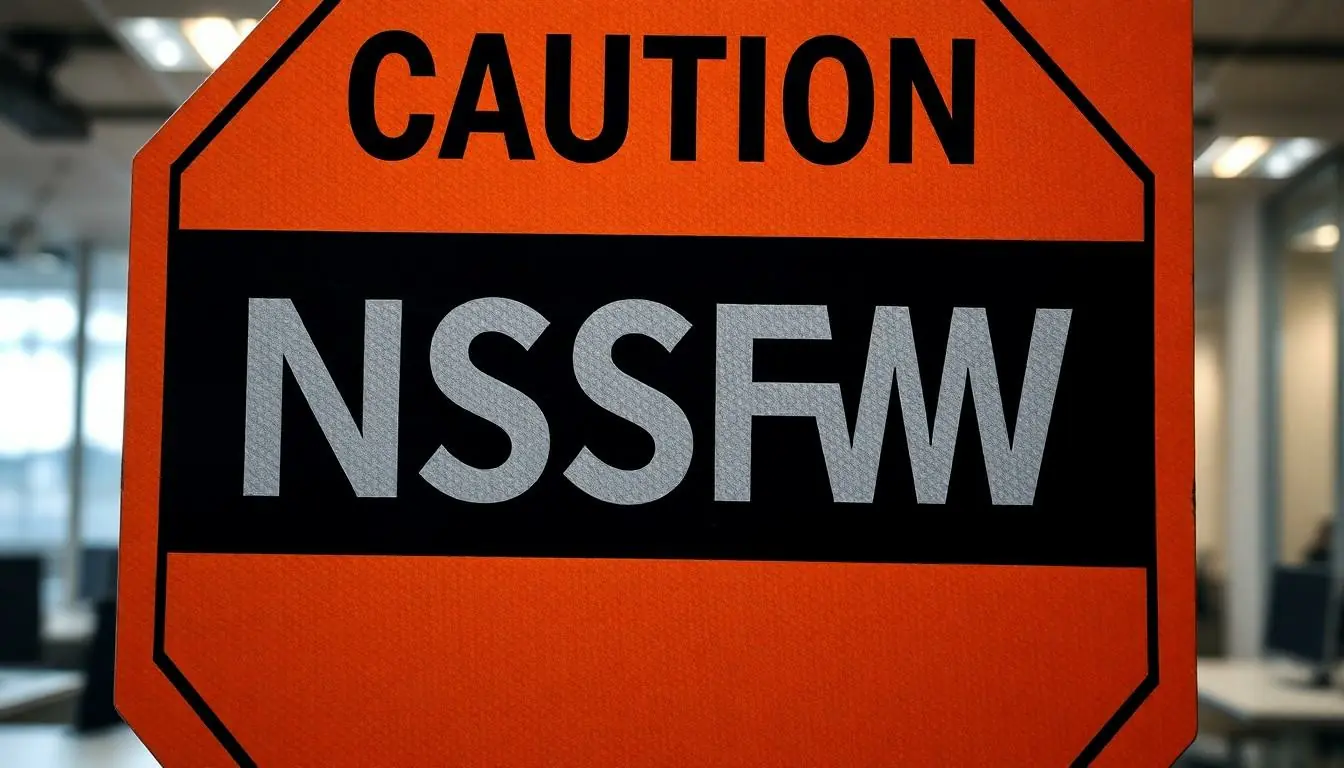In the ever-evolving landscape of AI chatbots, the question of whether ChatGPT allows NSFW content is one that tickles the curiosity of many. Picture this: you’re engaging in a lively conversation with an AI, and suddenly, you wonder if it’s ready to dive into the steamy side of things. Spoiler alert: it’s not quite the wild party you might expect.
Table of Contents
ToggleOverview of ChatGPT and NSFW Content
ChatGPT does not permit NSFW content in its interactions. This prohibition stems from OpenAI’s commitment to fostering a safe and respectful environment for all users. Users may express curiosity about the AI’s capabilities regarding risqué discussions, but existing guidelines restrict such engagements.
The model is designed to adhere to community standards. Content moderation practices ensure that harmful or explicit materials are filtered out effectively. Users encounter a wide range of topics when interacting with ChatGPT, yet adult-oriented subjects remain outside of acceptable parameters.
Ensuring user safety is a priority for OpenAI. Ethical guidelines dictate the boundaries for permissible content, emphasizing the importance of maintaining a professional and welcoming space. Input related to violence, hate speech, or sexually explicit themes triggers automatic filtering mechanisms designed to maintain compliance.
Many users may appreciate this cautious approach. Recognizing the diverse audience that uses the platform, ChatGPT focuses on delivering informative and engaging content while avoiding sensitive topics. This approach mitigates the risks associated with unfiltered conversations.
ChatGPT’s restrictions on NSFW content reflect broader principles of safety and inclusivity. These measures maintain a constructive dialogue across various subjects while clearly delineating boundaries regarding adult content. As a result, users can engage confidently within a system that prioritizes respectful communication.
Understanding NSFW Content

NSFW content refers to material that is deemed inappropriate for viewing in a professional, public, or workplace environment. Such content typically features explicit themes or imagery related to sexuality, violence, or substances.
Definition of NSFW
NSFW stands for “not safe for work.” This classification helps users identify content that may be unsuitable for shared viewing. Often, it applies to graphic visuals, adult themes, or material that could lead to discomfort in social settings. Content labeled as NSFW typically contains nudity, sexual acts, or other forms of adult-oriented themes.
Types of NSFW Content
Various types of NSFW content exist beyond explicit adult material. Pornographic images and videos, explicit sexual discussions, and graphic violence categorize this content. In addition, substance abuse-related topics and hate speech may also fall under this classification. Understanding these distinctions aids users in recognizing acceptable content limits. Many platforms enforce strict guidelines to filter out harmful materials, making these distinctions crucial for user safety.
ChatGPT’s Content Guidelines
ChatGPT maintains specific guidelines regarding NSFW material. OpenAI’s commitment to user safety plays a crucial role in setting these standards.
Policies on NSFW Material
ChatGPT prohibits all NSFW content to create a safe environment for users. Explicit themes related to sexuality, violence, or substance use fall under this restriction. Users can’t access pornographic material or engage in graphic discussions within the platform. OpenAI enforces content moderation practices to filter harmful materials actively. Compliance with these policies ensures ChatGPT remains appropriate for a broad audience. Many users appreciate these measures as they foster constructive dialogue while preventing exposure to potentially harmful content.
Consequences of Violating Guidelines
Violating ChatGPT’s content guidelines leads to specific repercussions. Users engaging in prohibited discussions may receive warnings or temporary bans from the platform. Repeated violations can result in permanent account suspension. OpenAI monitors interactions closely, applying moderation tools to uphold community standards. Maintaining a safe environment for all users supports the broader mission of encouraging respectful discourse. Understanding the consequences highlights the importance of adhering to established content guidelines.
User Experiences and Perspectives
User experiences with ChatGPT’s limitations regarding NSFW content illustrate diverse reactions. Many users express satisfaction with the platform’s commitment to safety.
Case Studies on NSFW Interactions
Content moderation examples highlight instances where users attempted to introduce NSFW conversations. One case involved a user who asked graphic questions about sex. The AI’s response included a polite refusal along with a reminder of the guidelines. Another instance featured a discussion about substance abuse, demonstrating a similar approach. ChatGPT consistently redirected users back to appropriate topics, reinforcing its role in maintaining a respectful environment.
Community Reactions
Community reactions to the prohibition of NSFW content vary widely. Enthusiasts appreciate the focus on safe interactions, promoting a positive atmosphere. Critics argue that restricting certain discussions may stifle creativity and honest dialogue. Feedback collected from users showcases the balance between open communication and appropriate conduct. Overall, the shared sentiment emphasizes respect and safety as essential values within the ChatGPT community.
Alternatives for NSFW Content Creation
Many creators seek alternatives for producing NSFW content due to restrictions on platforms like ChatGPT. Popular options exist that cater to adult-oriented material without compromising on creativity or safety.
Adult-oriented content can find a home on specialized sites designed for that purpose. Platforms such as OnlyFans and Patreon allow creators to monetize explicit content while maintaining control over their interactions. These sites provide community features, enabling creators to engage more directly with their audience.
Social media alternatives can also suit creators looking for a less restricted environment. Twitter, for example, permits NSFW content within certain guidelines, making it an appealing choice for sharing adult material. Creators often utilize direct messaging to connect intimately with followers, enhancing engagement.
Blogs serve another effective alternative for NSFW content sharing. WordPress and Tumblr allow for adult themes, and creators can tailor their content to specific audiences. Customization options give users the flexibility to create unique spaces that align with their artistic vision.
Streaming platforms specifically for adult content provide an interactive form of engagement. Websites like Chaturbate or LiveJasmin allow users to perform live without the stringent content limitations of mainstream services. The live interaction creates an immersive experience, catering directly to audience interests.
Utilizing encrypted messaging apps also offers a private way to share NSFW content among closed groups. Signal and Telegram support adult-themed channels, allowing creators to interact within a secure environment. These tools emphasize privacy while facilitating community building.
Overall, various alternatives exist for NSFW content creation, providing diverse platforms tailored to unique needs. Adjusting to these options leads to fruitful engagement opportunities with audiences.
ChatGPT’s strict prohibition of NSFW content underscores OpenAI’s dedication to maintaining a safe and respectful environment for users. By enforcing community standards and content moderation practices, it ensures that discussions remain appropriate and professional. While some users may find these limitations restrictive, many appreciate the focus on user safety and respectful interactions.
For those looking to explore NSFW themes, alternative platforms like OnlyFans and Patreon provide opportunities to engage with adult content while adhering to their guidelines. Ultimately, the commitment to user safety remains a priority, fostering a community where respectful dialogue can thrive.





